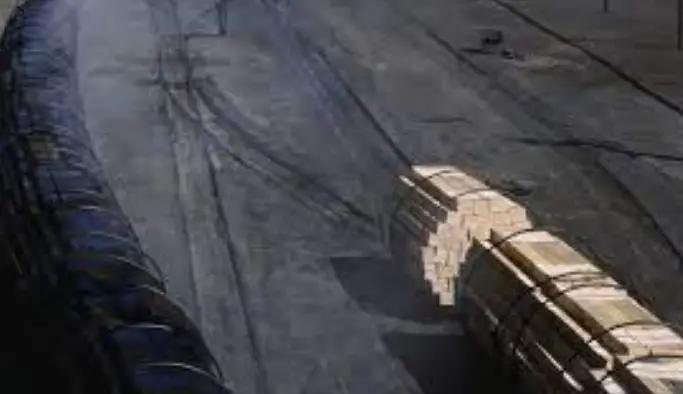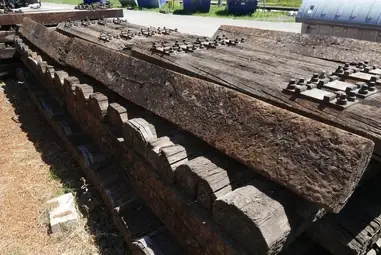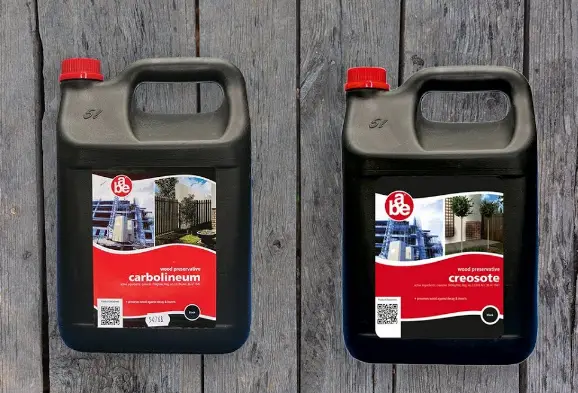Creosote and carbolineum are two traditional substances used in wood preservation, each with a distinct chemical composition and set of applications. Both products have served significant roles in extending the life of wood products and structures, providing protection against a variety of environmental and biological factors. Despite their common purpose, the differences between the two are substantial, rooted in their chemical makeup, usage, and impact on both health and the environment.
Creosote is a complex mixture of phenols, cresols, and other organic compounds derived from the distillation of coal tar. It is primarily used for preserving railway sleepers and telegraph poles. Carbolineum, on the other hand, is a wood preservative made from a mixture of various aromatic oils and other substances that also stem from coal tar. It is often used in agricultural settings for the treatment of fence posts and similar wooden structures. These two preservatives differ significantly in their application, effectiveness, and safety considerations.
While both substances are effective in preventing decay and pest infestations in wood, their usage today faces stringent regulations due to environmental and health concerns. The appropriate use of each depends heavily on the specific requirements of the project and local regulatory guidelines, making it essential to understand their properties and the contexts in which they are most beneficial.

Historical Context
Development of Creosote
Creosote, a wood preservative that has become synonymous with the long-lasting protection of outdoor wooden structures, traces its origins to the early 19th century. The substance was first derived from the distillation of coal tar, a byproduct of the gas manufacturing process. By the mid-1800s, creosote was extensively used in Europe, especially for treating railway sleepers (railroad ties) and telegraph poles, which were crucial to the expanding rail and communication networks of the Industrial Revolution.
Development of Carbolineum
Carbolineum’s development followed a similar path, emerging as a byproduct of coal tar distillation. It gained prominence in the late 19th century as an alternative to other wood preservatives. Known for its distinctive dark color and viscous consistency, carbolineum was primarily used in agricultural settings. It became particularly popular for treating wooden barns, fences, and other farm structures due to its effectiveness in preventing decay and deterring pests.
Historical Uses
Both creosote and carbolineum played pivotal roles in their respective domains. Creosote was essential for preserving and extending the life of wooden railroad infrastructure, while carbolineum was favored in rural environments for its robust protective qualities against harsh weather and pests. These substances helped to maintain the integrity and durability of wooden structures long before modern synthetic preservatives were available.
Chemical Composition
What is Creosote?
Creosote is a complex mixture of over 300 chemicals, predominantly consisting of polycyclic aromatic hydrocarbons (PAHs), phenols, and cresols. This composition makes it highly effective against fungal attacks and insect infestations, key threats to wood exposed to outdoor elements.
What is Carbolineum?
Carbolineum, while also a coal tar derivative, has a different chemical makeup, dominated by higher concentrations of aromatic oils and phenolic compounds. Its formulation is tailored to provide a protective barrier that is not only resistant to biological decay but also offers a waterproofing effect.
Key Components
The key components of both substances include:
- Phenols and cresols in creosote provide its potent antifungal and antibacterial properties.
- Aromatic oils in carbolineum contribute to its ability to repel water and prevent moisture-related decay.
Application Methods
How is Creosote Applied?
Creosote is applied to wood through a process known as pressure treatment:
- Wood is placed in a closed cylinder.
- Air is evacuated, and creosote is introduced under high pressure.
- The pressure forces the creosote deep into the wood fibers, providing deep and lasting protection.
How is Carbolineum Applied?
Carbolineum application is generally more straightforward and can be done using brushing or spraying techniques:
- Ensure the wood surface is clean and dry.
- Apply carbolineum using a brush or sprayer for even coverage.
- Allow to dry completely before exposing the wood to outdoor conditions.
Uses and Applications
Common Uses of Creosote
Creosote’s robust protective qualities make it ideal for use in:
- Railway sleepers
- Utility poles
- Marine pilings
- Outdoor fencing
Common Uses of Carbolineum
Carbolineum, on the other hand, is commonly used in:
- Agricultural wooden structures
- Garden fences
- Barns and sheds
- Decorative outdoor woodwork

Health and Safety Concerns
Health Risks of Creosote
The use of creosote as a wood preservative has raised significant health concerns over the years. The International Agency for Research on Cancer (IARC) has classified creosote as a Group 1 carcinogen, indicating that it is carcinogenic to humans. The primary health risks associated with exposure to creosote include:
- Skin irritation and burns: Direct contact can cause severe skin rashes and chemical burns.
- Respiratory issues: Inhalation of creosote vapors can lead to respiratory difficulties, lung inflammation, and other serious pulmonary problems.
- Long-term carcinogenic effects: Extended exposure to creosote has been linked to higher risks of developing skin and lung cancer.
Health Risks of Carbolineum
Although less studied than creosote, carbolineum also poses several health risks, particularly due to its similar chemical composition. Key health concerns include:
- Skin and eye irritation: Exposure can cause immediate irritation and potential chemical burns to the skin and eyes.
- Toxic fumes: Breathing in the fumes during application can irritate the respiratory tract and lead to breathing problems.
- Potential carcinogenicity: Like creosote, the long-term exposure risks are concerning, particularly regarding its carcinogenic potentials.
Safety Measures
To mitigate these health risks, several safety measures are recommended when handling or applying these substances:
- Use personal protective equipment (PPE): Gloves, goggles, respirators, and protective clothing should always be worn.
- Proper ventilation: Ensure that application areas are well-ventilated to minimize inhalation risks.
- Strict adherence to guidelines: Follow all manufacturer and safety guidelines during application to avoid accidents and exposures.
Environmental Impact
Ecological Effects of Creosote
Creosote’s environmental impact is significant, particularly in aquatic environments. It is toxic to many forms of aquatic life, leading to potential long-term damage to ecosystems. Key ecological concerns include:
- Water pollution: Leaching of creosote compounds into water bodies can poison aquatic ecosystems.
- Soil contamination: Creosote can persist in soil, affecting plant life and microorganisms.
- Bioaccumulation: Creosote compounds can accumulate in the tissues of animals, particularly in fish, leading to health issues in wildlife and any predators that consume them.
Ecological Effects of Carbolineum
Similar to creosote, carbolineum also impacts the environment:
- Soil and water pollution: Its use in agricultural settings often leads to runoff that can contaminate soil and water sources.
- Toxicity to plants and animals: Carbolineum can be toxic to plants, harming not just treated woods but also the surrounding vegetation and animal life.
Legal and Regulatory Status
Regulations on Creosote
Due to its health and environmental risks, creosote is heavily regulated in many countries. In the European Union, its use is restricted under the Biocidal Products Regulation (BPR), and in the United States, the Environmental Protection Agency (EPA) governs its use, primarily restricting it to professional applications and prohibiting most residential uses.
Regulations on Carbolineum
Carbolineum also faces regulatory controls, although they vary by region. In some areas, its use is restricted similarly to creosote, especially concerning applications that may lead to direct or indirect contact with food-producing animals or crops.
Current Trends and Research
Modern Developments in Creosote
Research continues into developing less hazardous formulations of creosote that maintain its effectiveness while reducing its carcinogenic properties. Innovations include encapsulated versions that minimize direct contact with the chemical, and new application techniques that reduce environmental contamination.
Modern Developments in Carbolineum
Similarly, advancements in carbolineum focus on reducing its toxicological profile. Researchers are exploring biodegradable alternatives that provide comparable preservation benefits without the associated health and environmental risks.
Alternative Solutions
Modern Alternatives to Creosote
The market has seen the introduction of several safer, more environmentally friendly wood preservatives as alternatives to creosote. These include:
- Copper-based preservatives: Such as Copper Azole and ACQ (Alkaline Copper Quaternary), which are less toxic and just as effective in many applications.
- Boron-based treatments: These are particularly favored in environments sensitive to harsh chemicals.
Modern Alternatives to Carbolineum
For carbolineum, alternatives also include natural oil-based products that offer protection against decay and pests without the toxic effects. These products, often based on linseed oil or tung oil, provide a safer option for treating agricultural and garden woods.

Frequently Asked Questions
What is Creosote?
Creosote is a wood preservative derived from the distillation of coal tar. It contains a complex blend of phenolic compounds, making it highly effective against fungal decay and insect infestation in wood, particularly in outdoor settings like railway infrastructure.
What is Carbolineum?
Carbolineum is another type of wood preservative, which also originates from coal tar but through a different formulation process. It is typically used for preserving and staining wood in agricultural applications, offering a dark protective coating against pests and moisture.
How do Creosote and Carbolineum differ?
While both are derived from coal tar, creosote and carbolineum differ primarily in their chemical composition and application methods. Creosote is used more extensively in heavy-duty industrial environments, whereas carbolineum is favored for agricultural and less intensive uses.
Are Creosote and Carbolineum safe to use?
Both substances have raised health and environmental concerns due to their toxicological profiles. As a result, their use is regulated in many countries, and safer alternatives are recommended for residential and less controlled environments.
Can Creosote and Carbolineum be used interchangeably?
Due to their different properties and the specific types of protection they offer, creosote and carbolineum are not typically used interchangeably. Selection depends on the project requirements and the level of preservation needed.
Conclusion
Creosote and carbolineum have both played crucial roles in wood preservation across various industries. However, their distinct differences in formulation and intended use dictate careful consideration for any application. With increasing regulatory scrutiny and health concerns, the selection between these two substances should be guided by both their effectiveness and their environmental impact.
Understanding the specifics of each can help in making informed decisions that align with current environmental policies and personal safety protocols. As alternatives continue to emerge, the reliance on traditional preservatives like creosote and carbolineum may decrease, ushering in new practices in wood conservation.

